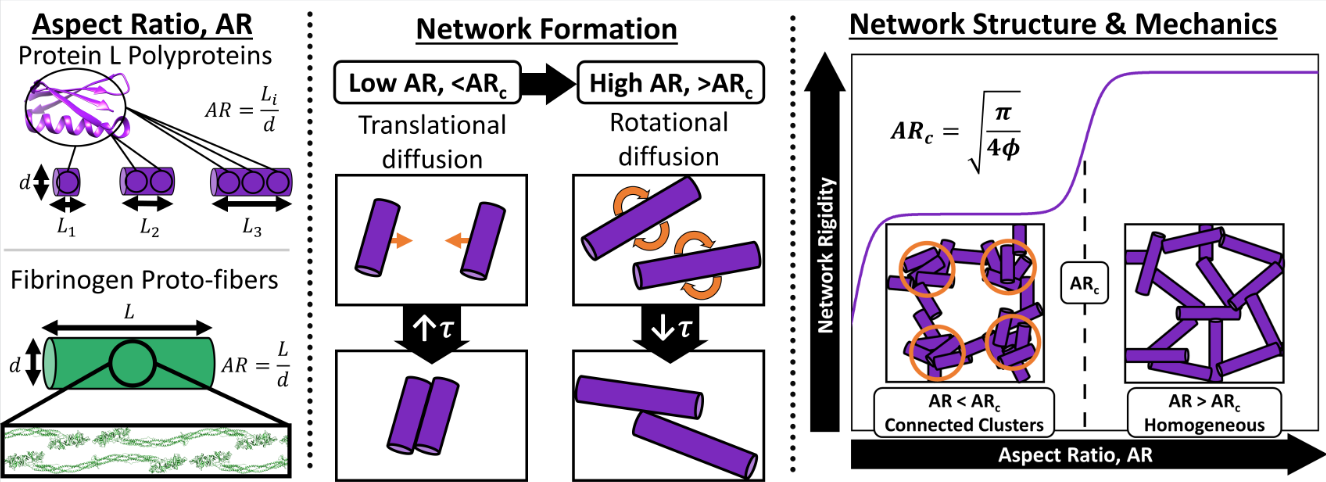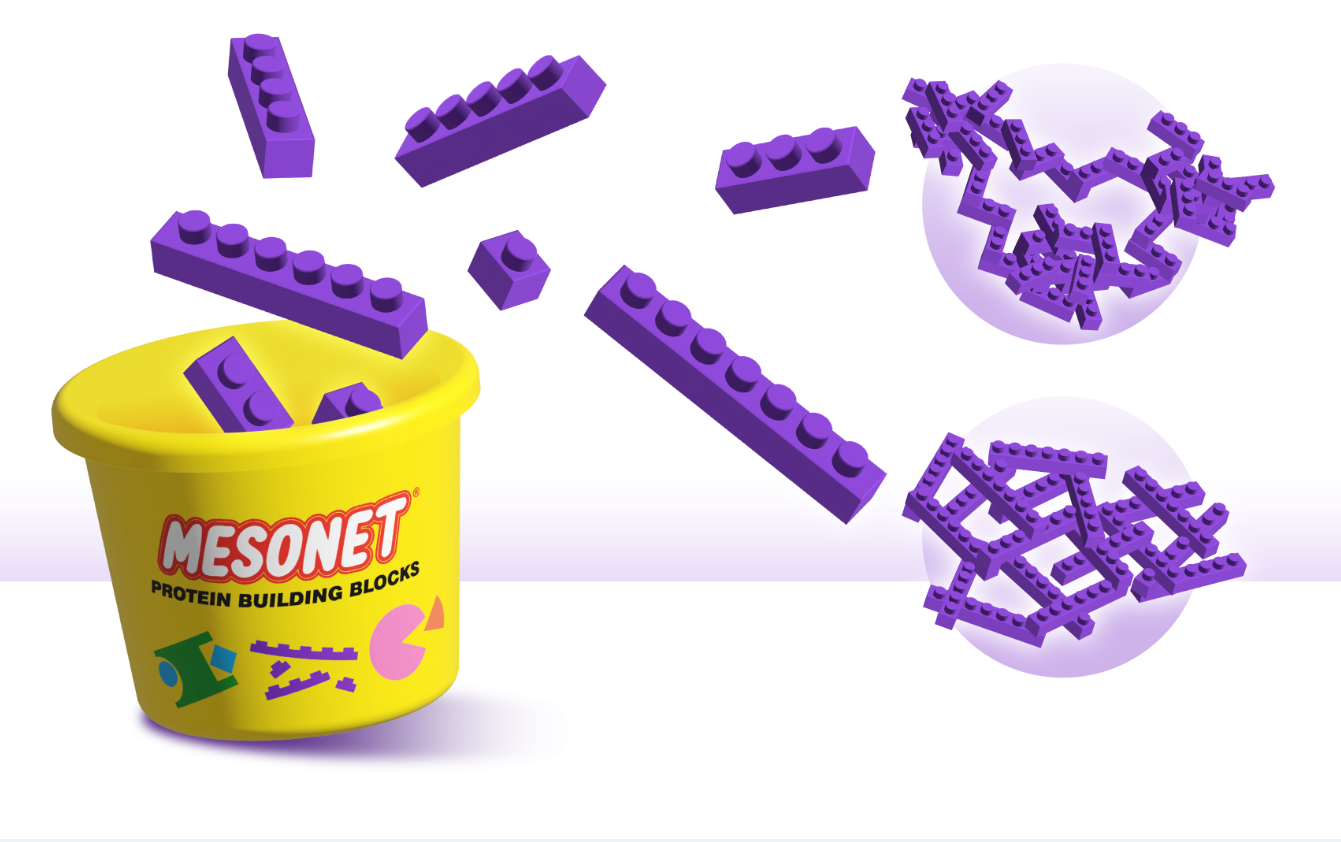Biology makes use of geometry for efficiency in many areas in order to achieve optimal functioning whilst minimising energy costs. Professor Lorna Dougan and Dr Matt Hughes, along with fellow researchers from the University of Leeds, and ISIS scientist Najet Mahmoudi, formed a team to investigate if protein assemblies are geometrically optimised in the hope that it could help the development of future biomaterials.
Aspect ratio (AR), a key property in geometry, is the ratio between the length and width of an object. Biomolecules with high AR are ubiquitous in living systems, suggesting it is evolutionarily optimal. However, little is known about the role of nanoscale biomolecule AR on the formation, mechanics, and structure of their networks.

“Aspect ratio is a crucial network building block property, defining network formation, architecture, and mechanics in synthetic and living systems.”
Lorna Dougan, Professor of Physics and ERC Consolidator Fellow at the School of Physics and Astronomy, University of Leeds, led the research, which was published in Nature Communications: “We can think of proteins as Lego building blocks. We want to use these building blocks to understand the hierarchical mechanics of biological systems and to create novel model biomaterials, which can be exploited to perform exciting functions. For example, as scaffolds in tissue engineering, as models for diseased tissues and their treatment, for smart wound healing and responsive drug delivery.”
In this study, protein engineering was exploited to control the AR of nanoscale building blocks. The team engineered folded homo-polyprotein building blocks with a range of AR (each had 1-7 of the same single domain protein joined by short 4-residue linkers) to create a model experimental system. The system was used to observe the impact of AR on protein network properties.
The team constructed hydrogels from each building block and used rheology and small-angle neutron scattering (SANS) on our Sans2D instrument to observe changes in mechanics and network topology when AR varied. For comparison with a naturally occurring protein network, a fibrin network was used.

The ERC funded MESONET project aims to use proteins as building blocks to create novel biomaterials.
They observed a shift in network assembly mechanisms that was replicated in the geometric rotation model, suggesting a transition from being dominated by translational diffusion (TDL) to rotational diffusion (RDL) as AR increases. This means building blocks previously had to translate in space to collide and form cross-links (enabling their assembly), but with rotational diffusion, collision and cross-links occur only around their centre of mass. Further examinations of the solution using dynamic light scattering demonstrated a shift in the dynamic behaviours of the protein in the solution that is responsible for the transition from TDL to RDL. The study demonstrated that mechanical rigidity (G’) of the network increases in parallel with AR up to a plateau value. This is caused by the transition from TDL to RDL, as it alters the network topology, enabling increased mechanical rigidity. This suggests several advantages for high AR building blocks for network formation. Increased network rigidity at equal concentrations maximizes the impact of each protein produced on the network and minimizes the amount that needs to be produced. Formation of isotropic homogenous networks results in consistent architecture across the network. Consistent formation time of the network over a wide range of building block concentrations allows a wide functional concentration range for crucial biological processes like blood clot formation.
Team member Robert Ariens is a professor of Vascular Biology at Leeds. He explained that “the findings provide an explanation for why people will start to bleed if their levels of fibrinogen in the blood drop below a certain threshold. This is because at that point the Lego building blocks with certain lengths are no longer able to build the scaffold for the blood clot that would stop bleeding. So, this explains why patients who have genetic abnormalities that lead to low levels of fibrinogen (known in medical terms as hypofibrinogenaemia and hypodysfibrinogenaemia) could be at risk of life-threatening bleeding. Also, in patients who have lost a lot of blood, e.g., trauma patients, the fibrinogen may drop below the concentration threshold, subsequently putting these trauma patients at risk of severe bleeding. Our research finally shows the biophysical reason as to why this is the case.”
Understanding more about how blood clots form could be crucial to understanding its role in diseases and avenues for new treatments. This study has provided critical insight into the importance of protein building block geometric properties, with the potential for materials science to make use of this information and exploit geometric properties in an equivalent way that biology has.
The project was supported by a grant from the Engineering and Physical Sciences Research Council (EPSRC) (EP/ P02288X/1) and a European Research Council Consolidator Fellowship/ UKRI Frontier Research Fellowship for the MESONET project UKRI (EP/X023524/1).
